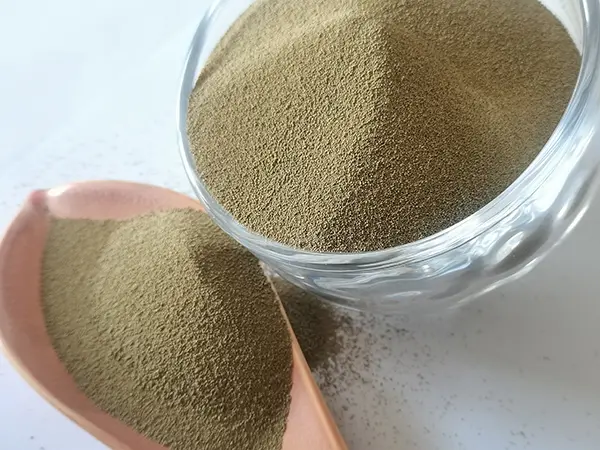The Significance and Applications of Sintered Sand in Modern Industry
Sintered sand is an innovative material that has gained attention in various industrial applications due to its unique properties and benefits. This versatile substance is produced by heating sand to a temperature below its melting point, causing the grains to fuse together. The result is a robust, durable material that has found a range of applications across industries, including construction, manufacturing, and even electronics.
One of the primary advantages of sintered sand is its excellent mechanical properties. The sintering process enhances the strength and stability of the sand, making it suitable for use in challenging environments where traditional materials might fail. For instance, in construction, sintered sand can be used in concrete production, providing improved tensile strength and resistance to environmental factors. This makes buildings more resilient to weathering, thereby extending their lifespan and reducing maintenance costs.
Moreover, sintered sand has a lower thermal conductivity compared to regular sand, making it an effective insulator. This property is particularly beneficial in the manufacturing of energy-efficient buildings and equipment. In the realm of electronics, sintered sand can be used as a material for producing semiconductor substrates, where its insulating properties help in preventing unwanted heat transfer. The electronics industry is increasingly leaning towards sustainable materials, and sintered sand offers a promising, eco-friendly alternative.
The environmental benefits of sintered sand cannot be overlooked. The production of sintered sand often utilizes recycled materials, reducing the need for virgin sand extraction. This contributes to sustainable practices in construction and manufacturing, as it minimizes the ecological footprint associated with raw material procurement. Additionally, the sintering process can be tailored to produce less waste, aligning with the growing demand for sustainable industrial practices.
sintered sand

Sintered sand’s applications extend beyond construction and electronics. In the field of art and design, it is increasingly being utilized for creating intricate sculptures and installations. Artists appreciate the material for its ability to hold detail while providing a unique aesthetic quality. This artistic use of sintered sand showcases its versatility and expands its role in contemporary culture.
Furthermore, the resilience of sintered sand makes it an ideal candidate for use in the production of molds and cores in metal casting. The high temperature resistance and durability of sintered sand molds ensure precise castings, leading to improved product quality in various manufacturing sectors. Industries that rely on casting processes are increasingly adopting sintered sand due to its superior performance compared to traditional mold materials.
The future of sintered sand appears promising, as ongoing research continues to unlock new possibilities for its use. Innovations in nanotechnology and material science are expected to enhance its properties further, paving the way for even more advanced applications. As industries seek to improve efficiency and sustainability, sintered sand will likely play a crucial role in shaping the future of manufacturing and design.
In conclusion, sintered sand is a remarkable material that offers numerous benefits across various sectors. Its mechanical strength, thermal insulation, and environmentally friendly production processes make it a valuable asset in modern industry. As we continue to explore and innovate, sintered sand is poised to become an integral component in various applications, driving advancements in technology, construction, and art. With its myriad advantages, the material stands as a testament to the power of science and innovation in addressing contemporary challenges and enhancing our future.
Post time:сеп . 30, 2024 15:04
Next:Inobasyon ng 3D na Pagpi-print sa Buhangin para sa Modernong Arkitektura
